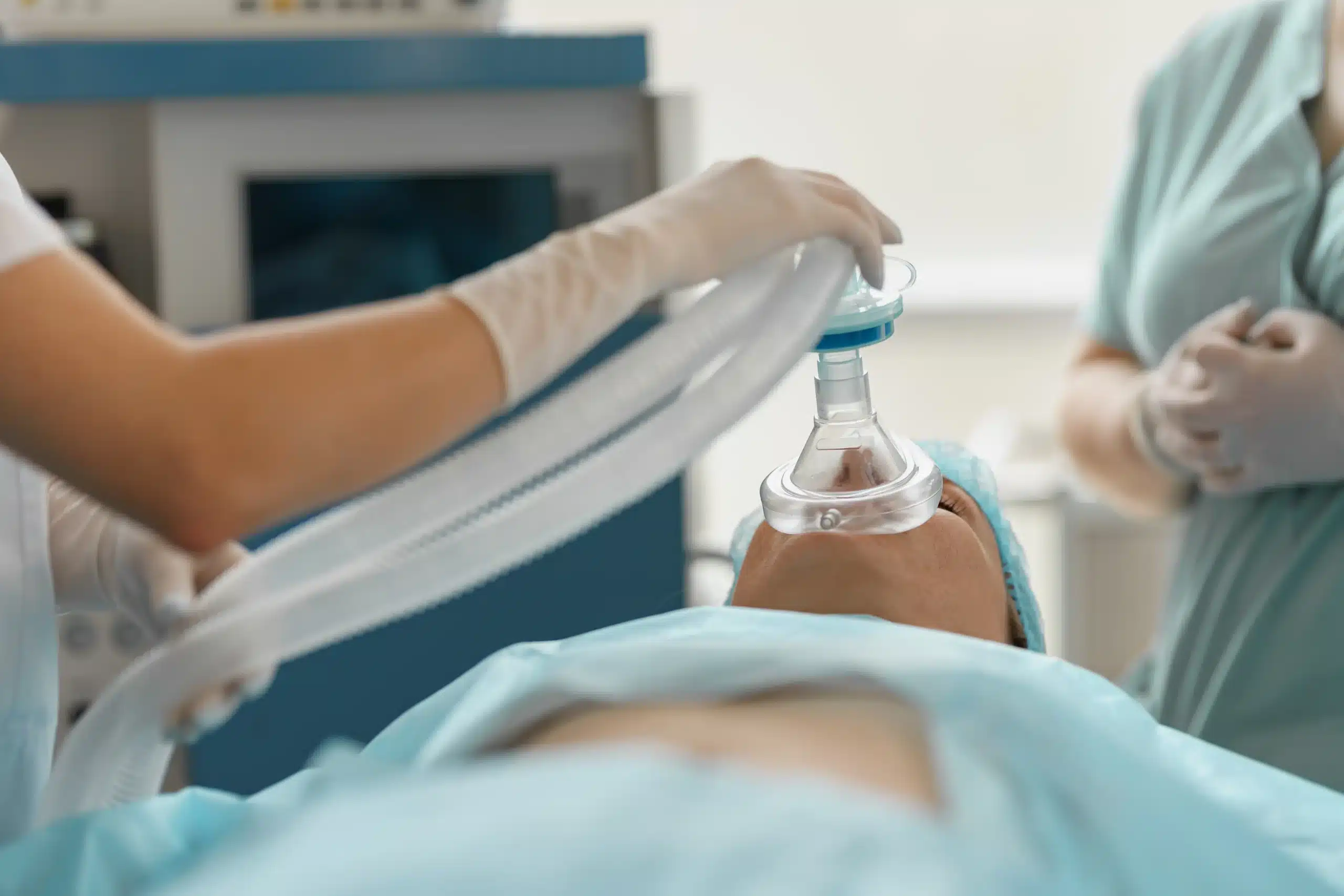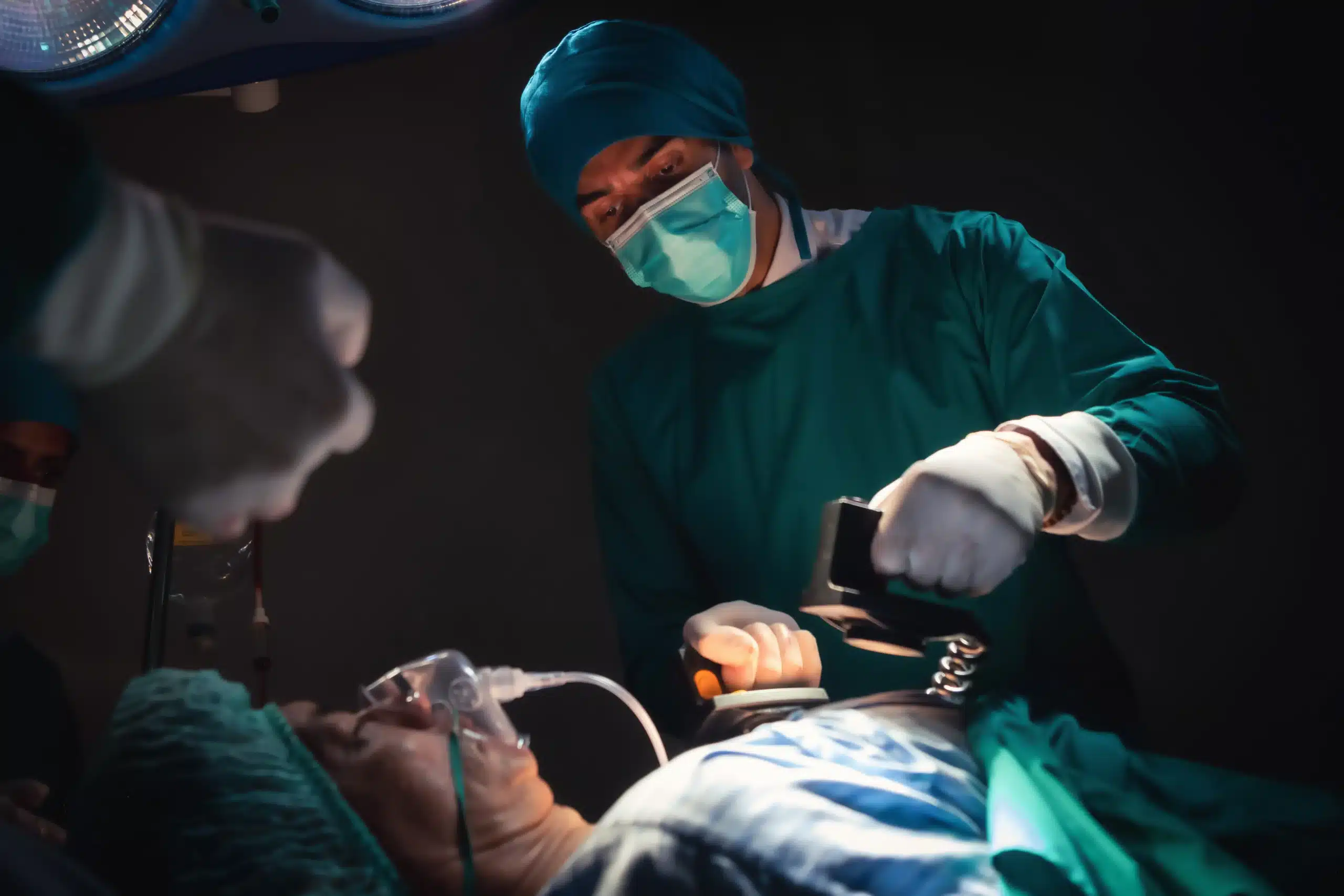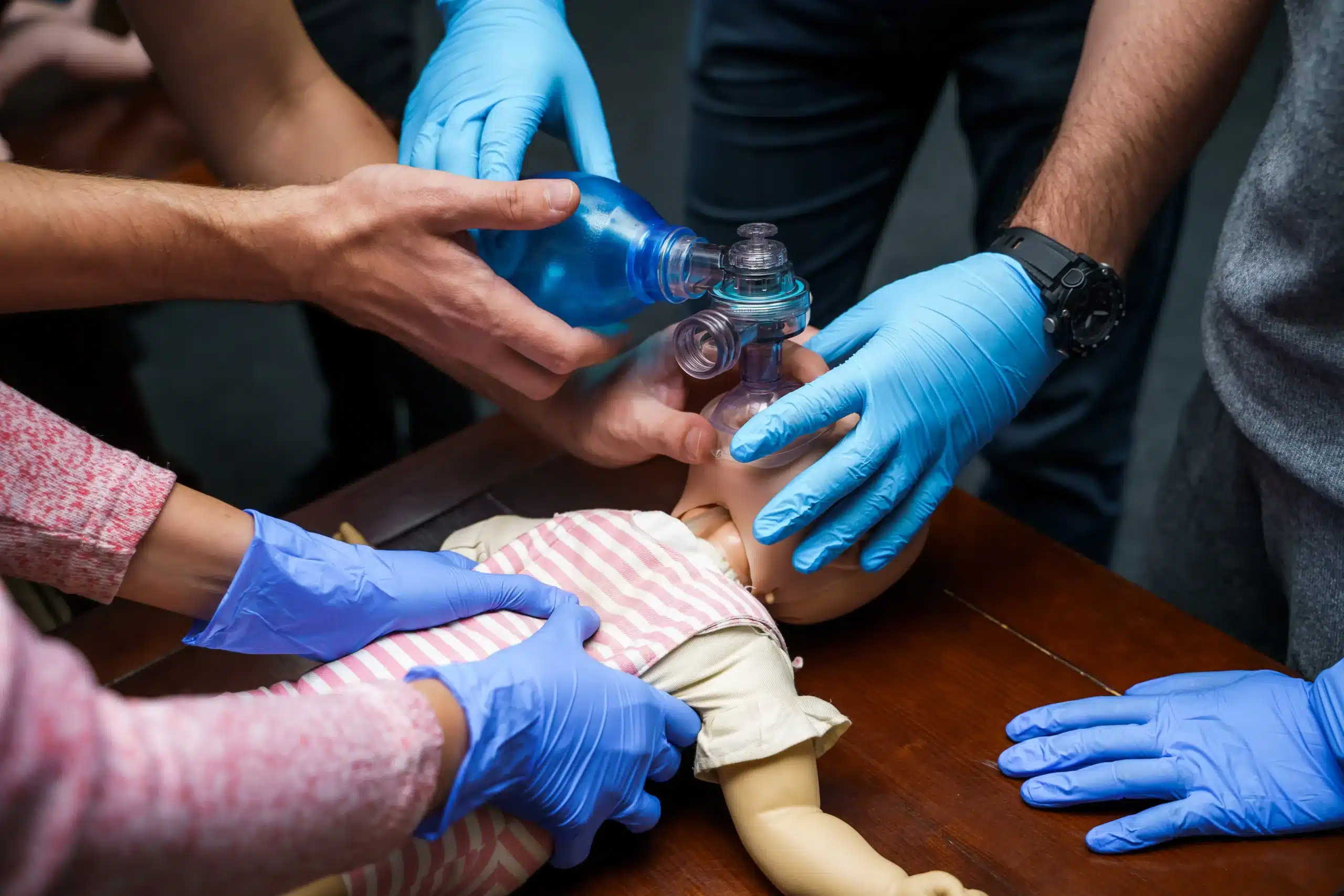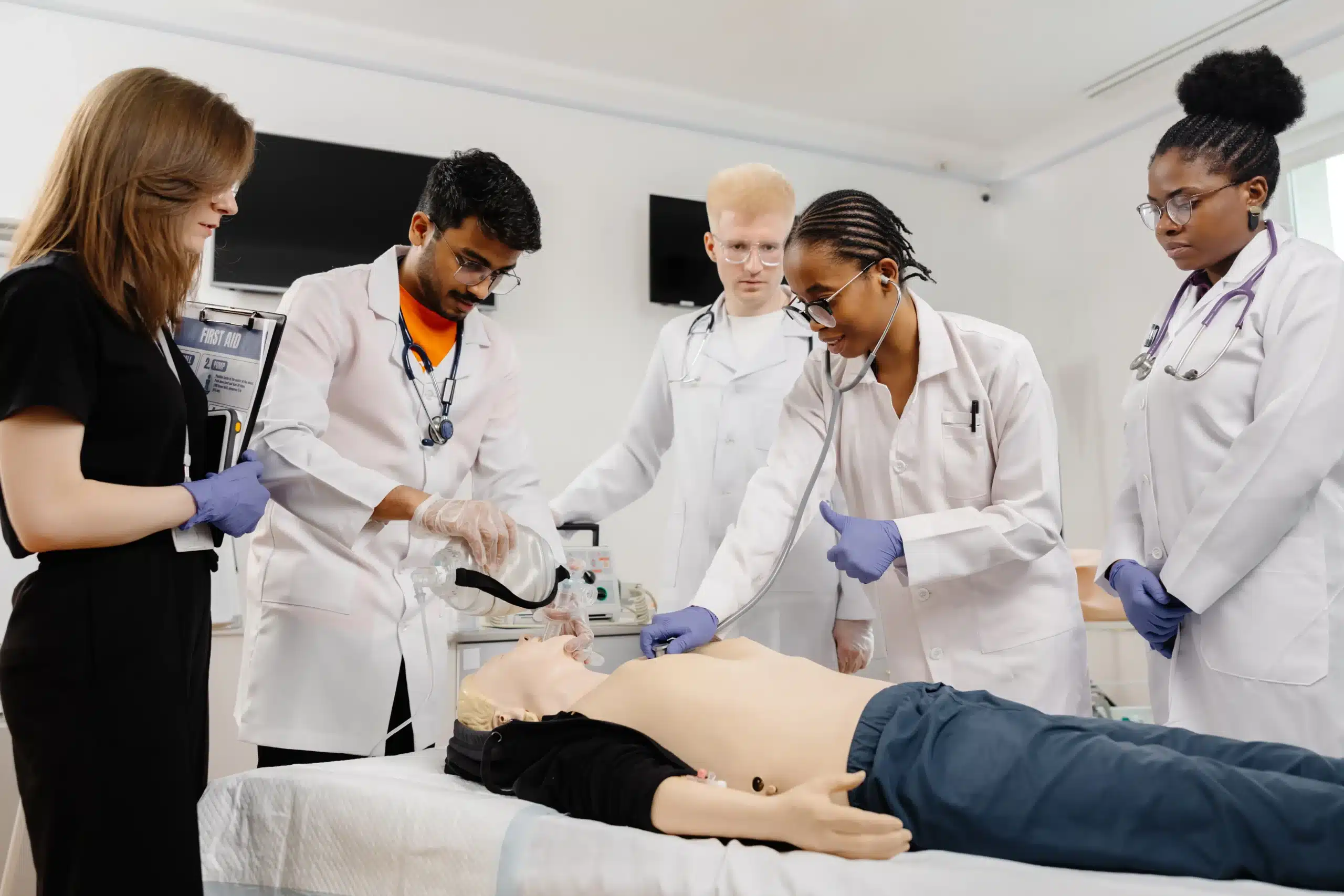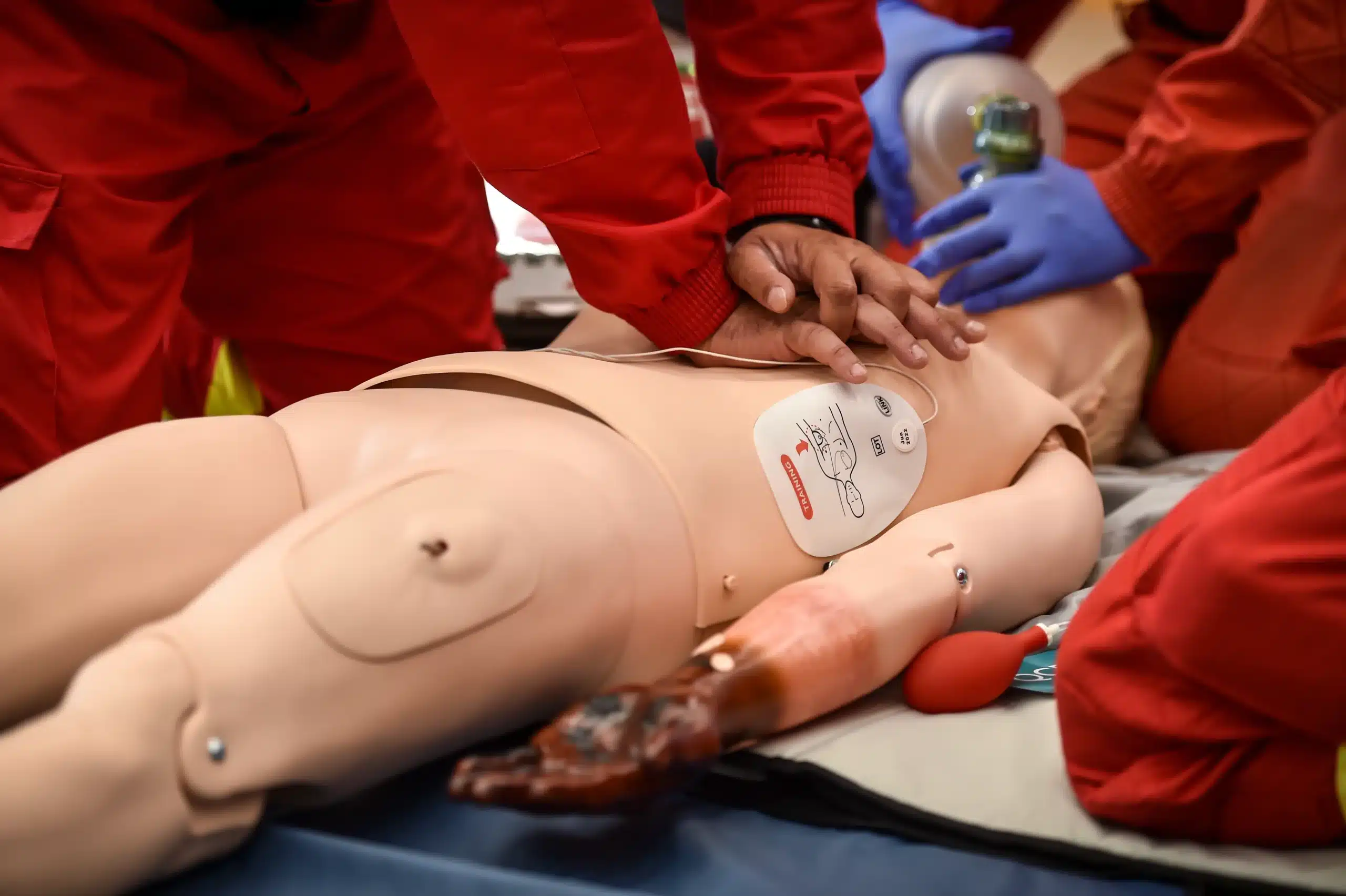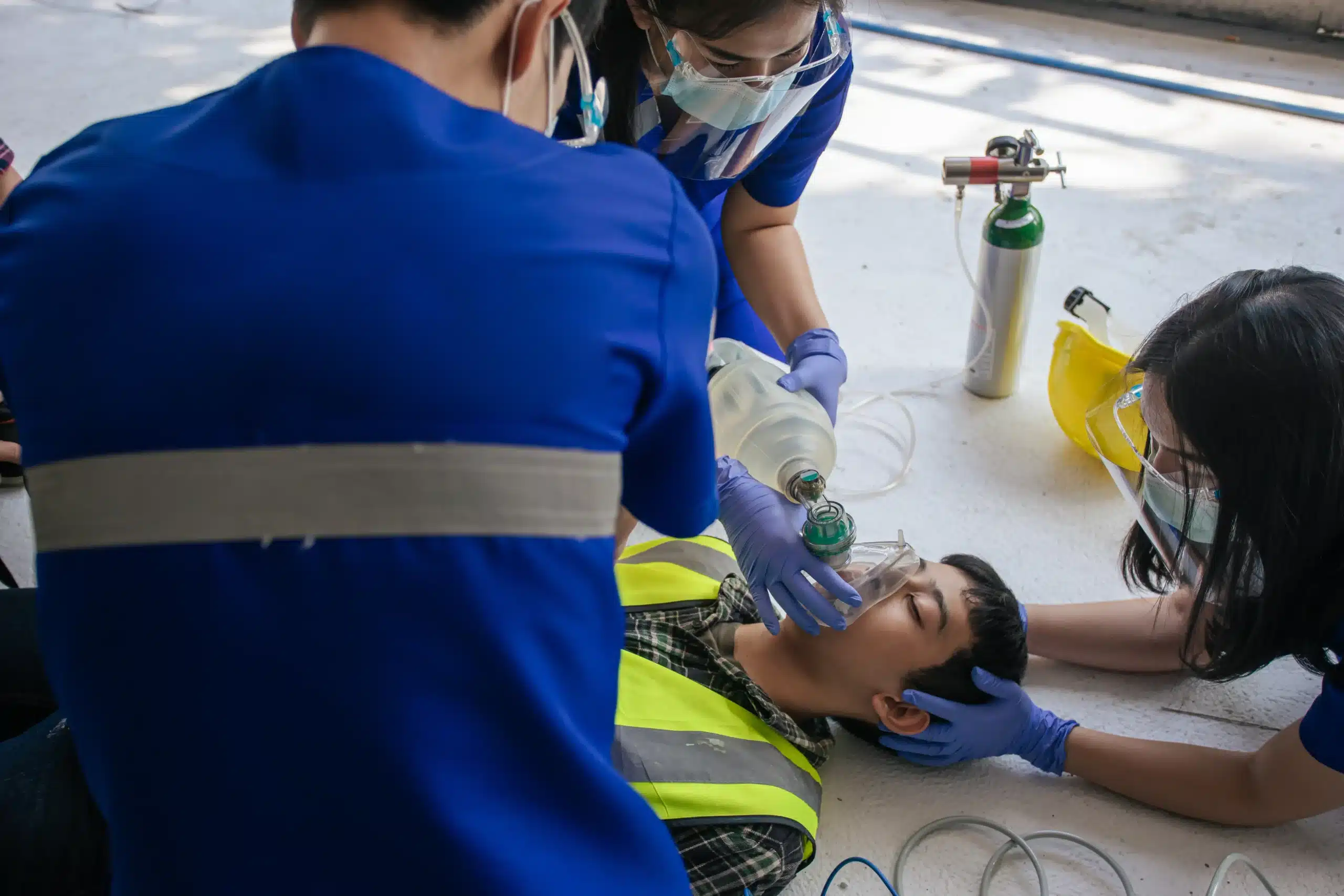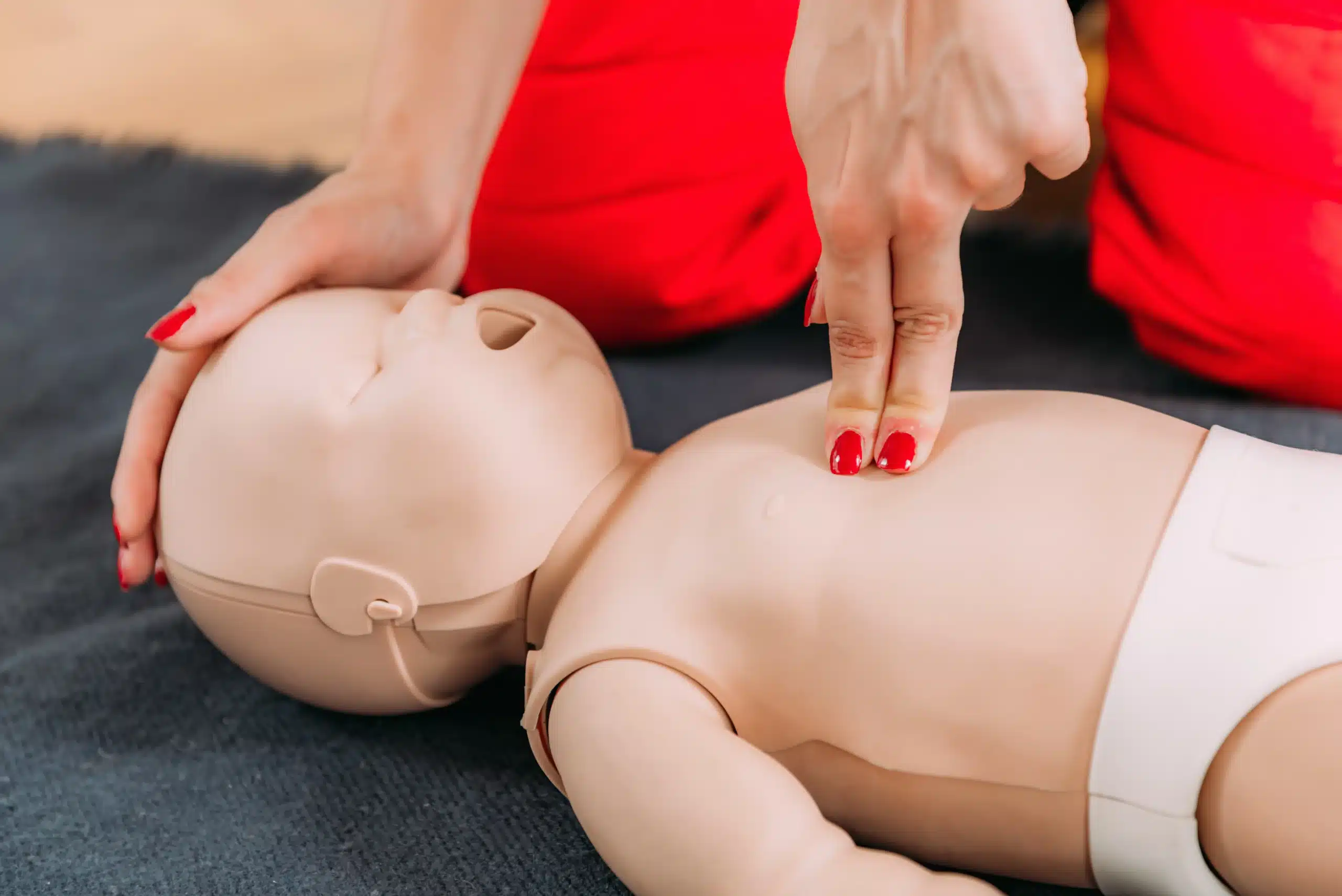Life has a way of throwing curveballs when we least expect them. A sudden injury at home, an accident on the road, or a medical emergency at work—these situations can be unsettling, especially if you don’t know how to help. That’s where first-aid training comes in. It empowers you to confidently handle emergencies, providing essential care until professional help arrives. Whether you’re searching for “first-aid classes near me” to enhance your preparedness at home or seeking certification for your workplace, this guide will break down everything you need to know about first-aid training, from the different types of courses available to the benefits of becoming certified. We’ll also explore how to find classes in your area and debunk some common myths about first-aid training.
Key Takeaways
- First aid skills empower everyone: Equipping yourself with first-aid knowledge helps you manage everyday injuries and respond effectively in emergencies. These skills are valuable for everyone, not just medical professionals.
- Finding a suitable class is straightforward: Many organizations, including the American Red Cross and local community centers, offer first-aid training. Consider accreditation, format, and instructor experience when selecting a course.
- Stay current with your training: Regular practice and refresher courses are essential for maintaining your first-aid skills and confidence. Recertification keeps you up-to-date on the latest procedures, ensuring you’re prepared for any situation.
What Are First-Aid Classes?
First-aid classes teach you how to handle emergencies. These classes cover a range of topics, from assessing an emergency and performing CPR to caring for injuries and illnesses. They empower you to respond effectively and confidently in urgent situations. Think of it as equipping yourself with a practical toolkit for various scenarios, whether at home, work, or just out and about.
First-aid training isn’t just for medical professionals. Basic first-aid training offers practical skills applicable in various workplace settings—anyone from employees and managers to bystanders can benefit. These courses also dispel common first-aid myths, giving you the confidence to act when needed. Learning first aid and CPR are invaluable skills that can make a real difference, potentially saving lives. Proper first aid is crucial for preventing complications and easing pain, making these classes essential for anyone who wants to be prepared.
Explore First-Aid Class Types
Knowing which first-aid course fits your needs helps narrow your search. Let’s break down the common types of first-aid training available.
CPR and AED Training
CPR and AED training are often taken together and are crucial for responding to cardiac emergencies. You’ll learn how to perform CPR (cardiopulmonary resuscitation) and use an AED (automated external defibrillator). These skills can be life-saving for someone experiencing sudden cardiac arrest. Many workplaces and community organizations require this training for their employees or volunteers. Safety Training Seminars offers BLS courses in San Francisco.
Basic First-Aid
Basic first-aid courses equip you with the skills to handle common injuries and illnesses. You’ll learn to treat minor cuts, burns, sprains, and other everyday medical situations. These classes also cover essential topics like recognizing the signs of a medical emergency and when to call for professional help. A basic first-aid course is a great starting point for anyone looking to develop fundamental life-saving skills. Check with your local community center or the American Red Cross for available courses.
Advanced First-Aid
Advanced first-aid courses build upon the basics, delving into more complex medical scenarios. These courses may cover managing severe bleeding, fractures, head injuries, and allergic reactions. Advanced first-aid training is often pursued by healthcare professionals, first responders, or those working in high-risk environments. St. John Ambulance is one organization that offers advanced first-aid training. They also offer more specialized courses like wilderness or remote first aid.
Specialized First-Aid Courses
Specialized first-aid courses cater to specific needs and environments. For example, wilderness first-aid focuses on handling medical emergencies in remote locations, while pediatric first-aid teaches you how to care for infants and children. Other specialized courses might include first aid for sports injuries or workplace emergencies. Consider your personal or professional needs when choosing a specialized course. The National Safety Council offers a variety of specialized first-aid training programs. You can also find pet first-aid courses through organizations like the American Red Cross.
Find First-Aid Classes Near You
Ready to equip yourself with essential life-saving skills? Finding a first-aid class nearby is easier than you think. Here are several reliable avenues to explore:
Online Search Tools
The internet is your best friend when searching for local resources. A quick search using terms like “first-aid classes near me” or “CPR training [your city]” will generate a list of potential providers. The American Red Cross, for example, offers a convenient class finder to locate courses in your area, covering everything from basic first-aid to more specialized training.
Local Community Centers and Fire Departments
Community centers and fire departments frequently host first-aid and CPR training sessions. Check your local community center’s website or give them a call to inquire about upcoming courses. Many fire departments also offer these courses, sometimes even for free, so it’s worth checking with your local department for their schedule. You can also find free opportunities highlighted in online community forums.
Workplace Offerings
Your workplace might also be a resource for first-aid training. Some employers offer or even require employees to obtain certification, especially in roles where these skills are directly relevant. Inquire with your HR department to see if your company provides any subsidized or free training programs. This can be a convenient and cost-effective way to gain valuable skills.
Hospitals and Medical Centers
Hospitals and medical centers are natural hubs for first-aid and CPR training. They often conduct regular courses for both healthcare professionals and the general public. Check the websites of hospitals in your area or contact their education departments to learn about available classes. These skills are important for everyone, not just medical professionals, so don’t hesitate to reach out.
Discover the Benefits of First-Aid Training
Knowing what to do in a medical emergency can make all the difference. First-aid training equips you with the skills and confidence to handle a range of situations, from minor injuries to life-threatening events. It’s an investment in yourself, your community, and even your career.
Life-Saving Skills
First aid and CPR are essential life-saving skills. In emergencies, seconds count, and having the training to respond effectively can dramatically increase the chances of survival. Learning techniques like CPR and how to control bleeding empowers you to provide immediate assistance while waiting for professional medical help. These skills can truly be the difference between life and death, as highlighted in this article discussing CPR and first aid.
Confidence in Emergency Situations
Beyond the technical skills, first-aid training instills confidence. Knowing how to assess a situation and take appropriate action can help you stay calm and focused under pressure. This confidence also helps dispel common misconceptions about first aid, allowing you to respond effectively rather than being paralyzed by uncertainty. Understanding these misconceptions is a key benefit of training.
Career Advancement Opportunities
First-aid training can be a valuable asset in many professions. Employers often prioritize candidates with these skills, especially in healthcare, education, and childcare. Having a first-aid certification on your resume demonstrates your preparedness and commitment to safety, giving you a competitive edge.
Community Impact
Learning first aid isn’t just about individual preparedness; it’s about building a safer community. When more people are equipped to handle emergencies, everyone benefits. You become a valuable resource for your family, friends, neighbors, and coworkers. By dispelling common first-aid myths, we can encourage more people to seek out this essential training and create a more resilient community.
Choose the Right First-Aid Class
Finding the right first-aid class means thinking about a few key things to make sure the training works for you and your learning style. Here’s what to consider:
Accreditation and Certification
A good first-aid course should be accredited by a recognized organization like the American Heart Association or the American Red Cross. This ensures the material covers what you need to know. For workplace training, certifications like “Basic First Aid” (previously OFA Level 1) often work well, offering practical skills for different professional settings. Learn more about these certifications from Mainland Safety.
Class Duration and Format
First-aid courses come in different formats and lengths. Consider your schedule and how you learn best when choosing between in-person and online options. In-person classes offer hands-on practice and direct interaction with instructors, while online courses offer more flexibility. A blended learning approach, mixing online modules with in-person skills sessions, might also be a good option. By Grace CPR Compliance discusses the benefits of hands-on training.
Instructor Qualifications
The instructor’s experience matters. Look for certified instructors with a background in healthcare or emergency response. Experienced instructors can demonstrate techniques clearly, answer your questions, and create a comfortable learning environment. Healthline First Aid points out the advantages of learning from healthcare providers.
Cost Considerations
First-aid training costs vary. Compare prices to find a course that fits your budget. Remember, good training is an investment in your ability to handle emergencies. See if your employer offers first-aid training or if there are community programs with discounts. CPR Certification Now emphasizes the importance of making this training accessible.
Reviews and Testimonials
Before signing up, read reviews from other students. This can give you a sense of the teaching quality, the course content, and what the class is like overall. Look for comments about the instructor, the hands-on practice, and how clear the materials are. Solid Rock Health encourages wider participation in first-aid training, and their site, like others, often includes student feedback.
What to Expect in a First-Aid Class
So, you’ve decided to learn first-aid—fantastic! Knowing what awaits you can make the whole experience smoother and more enjoyable. Here’s a glimpse into a typical first-aid class:
Classroom Learning
First-aid classes blend theory with practical application. Expect engaging discussions about various medical emergencies, like cuts, burns, sprains, and allergic reactions. You’ll learn how to assess a situation and determine the appropriate response. A good instructor will also debunk common first-aid myths, which helps clarify any misconceptions you might have. For example, did you know that you shouldn’t put butter on a burn? These classroom discussions are essential for building a solid foundation of first-aid knowledge.
Hands-On Practice
Theory is important, but hands-on practice is where you truly gain confidence. Most first-aid classes include simulations and role-playing exercises that allow you to apply your newfound knowledge in realistic scenarios. You’ll practice essential skills like CPR, bandaging wounds, and splinting fractures. This practical training is invaluable for ensuring you’re prepared to respond effectively in a real emergency. Don’t be shy about asking questions during this portion—the more you practice, the more comfortable you’ll become. Hands-on training is key to remembering these skills when you need them most.
Assessment and Certification Process
Once you’ve completed the classroom learning and hands-on practice, most courses include an assessment to evaluate your understanding and skills. This might involve a written exam, a practical demonstration, or a combination of both. Successful completion typically leads to certification, validating your first-aid knowledge and skills. This certification can be a valuable asset, both personally and professionally. Keep in mind that certifications often have an expiration date, so remember to recertify to keep your skills sharp.
Explore First-Aid Class Providers
Finding the right first-aid class often depends on your specific needs and location. Here are a few well-known providers to get you started:
Safety Training Seminars
Safety Training Seminars offers a range of first-aid courses designed for various workplaces. Their basic first-aid training equips employees, managers, and even bystanders with practical skills to handle emergencies. They focus on providing affordable, high-quality training. Check their website for course schedules and locations.
American Red Cross
The American Red Cross is a trusted name in first-aid training. They offer various first-aid courses to suit different learning styles and schedules, emphasizing the importance of confidence and preparedness during emergencies. Their website makes it easy to find a class near you.
American Heart Association
The American Heart Association (AHA) also provides comprehensive first-aid training. Many providers, such as Healthline First Aid, offer AHA-certified courses in CPR, first aid, and AED training. AHA certification is widely recognized and respected. Visit the AHA website or a training provider’s site for more information.
St. John Ambulance
St. John Ambulance is another reputable provider of first-aid and CPR training. They believe these essential skills are for everyone, not just healthcare professionals. Solid Rock Health highlights the importance of such training and discusses common first-aid misconceptions. You can find class information on the St. John Ambulance website.
National Safety Council
The National Safety Council is a leader in workplace safety and offers a variety of first-aid training programs. They emphasize the importance of accurate first-aid knowledge. Resources like CPR Certification Now discuss the serious consequences of first-aid misconceptions. Visit the National Safety Council website to explore their training options.
Debunking First-Aid Training Myths
Let’s clear up some common misconceptions about first-aid training. These myths can prevent people from learning potentially life-saving skills.
“Only for Medical Professionals”
This is a major misconception. First aid and CPR are for everyone. While medical professionals use these skills regularly, knowing what to do in an emergency can make a world of difference for anyone. Empowering yourself with first-aid knowledge means you can help family, friends, coworkers, or even strangers in a crisis. Think of it as a life skill, like knowing how to cook or change a tire—valuable for everyone, not just specialists. Learn more about debunking common misconceptions about CPR and first aid.
“Too Complicated to Learn”
First-aid courses are designed to be accessible to everyone, regardless of background. They break down complex procedures into easy-to-understand steps. Instructors guide you through the process, offering plenty of opportunities for hands-on practice. You’ll be surprised how quickly you can grasp the essentials. Check out this article on debunking first aid myths.
“Skills Are Easily Forgotten”
Like any skill, regular practice helps keep your first-aid knowledge sharp. However, even without constant refreshers, studies show that people retain core skills much longer than they think. Plus, a quick refresher course can easily bring those skills back to the forefront. Don’t let this myth discourage you from learning something so valuable.
“Only for Serious Emergencies”
First aid isn’t just for dramatic, life-or-death situations. It covers a wide range of scenarios, from minor cuts and burns to more serious injuries. Knowing how to treat a sprained ankle or stop a nosebleed can prevent discomfort and further complications. These everyday applications make first-aid training relevant for everyone. Learn more about the importance of first aid in various situations.
Maintain Your First-Aid Skills
Knowing how to perform first aid is a skill that can literally save a life, but like any skill, it gets rusty if you don’t use it. Staying current with the latest techniques and best practices is essential for providing effective care during an emergency. This section covers how to maintain your first-aid skills so you can be prepared when it matters most.
Recertification Requirements
Most first-aid certifications, like those from the American Red Cross, are valid for two years. Check with your certifying organization for their specific recertification policy. Keeping your certification current not only validates your skills but also ensures you’re up to date on any changes in first-aid procedures.
Ongoing Practice and Refresher Courses
Even if your certification is current, regular practice is key to maintaining muscle memory and confidence. Consider taking a refresher course periodically, even if it isn’t required for recertification. These courses reinforce essential skills and can introduce you to new techniques or equipment. Proper first-aid treatment is crucial in emergencies, and ongoing practice helps ensure you can deliver it effectively. Many providers offer these courses, so check with organizations like Safety Training Seminars or your local community center. Hands-on practice and review can make a real difference when faced with a real-life emergency.
Learn Key First-Aid Skills
Knowing key first-aid skills empowers you to respond effectively in emergencies. From minor injuries to life-threatening situations, having this knowledge can make all the difference. Let’s explore some essential first-aid techniques:
CPR Techniques
CPR, or Cardiopulmonary Resuscitation, is a life-saving technique used when someone’s heart stops beating. Learning CPR involves understanding chest compressions and rescue breaths. It’s crucial to receive proper training from a certified provider like Safety Training Seminars, which offers CPR courses in San Francisco and over 60 other cities. These courses equip you with the skills and confidence to perform CPR effectively. For healthcare professionals seeking to maintain their CPR skills, Safety Training Seminars also provides the RQI program in Concord and San Francisco.
Wound Care
Proper wound care is essential to prevent infection and promote healing. This involves cleaning the wound, applying antiseptic, and covering it with a sterile dressing. Knowing how to recognize different types of wounds and administer appropriate care can significantly impact recovery. For more serious wounds, always seek professional medical attention.
Choking Relief
Choking can be a life-threatening emergency. Learning how to perform the Heimlich maneuver on adults, children, and infants is a vital skill. This technique involves applying abdominal thrusts to dislodge the object obstructing the airway. Quick action is crucial in choking situations, and proper training can help you respond confidently and effectively. The American Red Cross offers resources and courses on choking relief and other essential first-aid skills.
Managing Shock
Shock can occur after a traumatic injury or illness and requires immediate attention. Recognizing the signs of shock, such as pale skin, rapid breathing, and confusion, is essential. First-aid for shock includes keeping the person warm, elevating their legs, and reassuring them while waiting for professional medical help.
Basic Bandaging Techniques
Bandaging is a fundamental first-aid skill used to cover wounds, control bleeding, and provide support to injured limbs. Learning different bandaging techniques for various injuries is important. Proper bandaging helps protect the wound, minimizes the risk of infection, and promotes healing.
Related Articles
- CPR & First Aid Training in San Francisco: A Guide – San Francisco CPR Classes
- Find CPR Classes Near Me: Your Complete Guide – San Francisco CPR Classes
- Best CPR and First Aid Training in San Francisco – San Francisco CPR Classes
- CPR Certification in San Francisco: Your Complete Guide – San Francisco CPR Classes
- Advanced Cardiac Life Support (ACLS) in SF – San Francisco CPR Classes
Frequently Asked Questions
What’s the difference between basic and advanced first aid?
Basic first aid covers common injuries like cuts, burns, and sprains, focusing on immediate care until professional help arrives. Advanced first aid delves into more complex situations, such as severe bleeding, fractures, and head injuries, often involving a deeper understanding of anatomy and physiology. The level you choose depends on your needs and interests. Basic is great for everyday preparedness, while advanced training is often pursued by those in healthcare or high-risk environments.
How can I find first-aid training near me?
Finding a class is easier than you think! Start with a simple online search using keywords like “first aid training [your city]”. Check your local community centers, fire departments, and hospitals, as they often host classes. Your workplace might also offer training opportunities, so it’s worth checking with your HR department. Organizations like the American Red Cross and the American Heart Association have websites with class finders to help you locate training near you.
How long does a first-aid certification last, and how do I renew it?
Most first-aid certifications are valid for about two years. Always check with your certifying organization (like the American Red Cross or American Heart Association) for their specific recertification requirements. They’ll have information on the process and any necessary refresher courses. Staying current with your certification ensures your skills are up-to-date and you’re prepared to respond effectively in an emergency.
What if I’m nervous about performing first aid in a real emergency?
It’s completely normal to feel a bit apprehensive. That’s why hands-on practice during training is so important. It builds your confidence and helps you react instinctively in a real situation. Remember, any first aid is better than no first aid. Even basic steps can make a significant difference while you wait for professional help to arrive. Trust your training and focus on what you’ve learned.
Is online first-aid training as effective as in-person training?
Online training can be a convenient way to learn the basics, but it often lacks the hands-on practice crucial for developing essential skills like CPR and bandaging. In-person classes provide the opportunity to practice techniques under the guidance of an instructor, ask questions, and receive immediate feedback. If you opt for online training, consider supplementing it with a hands-on skills session to solidify your learning. A blended approach, combining online learning with in-person practice, can be a very effective way to gain both knowledge and practical skills.


